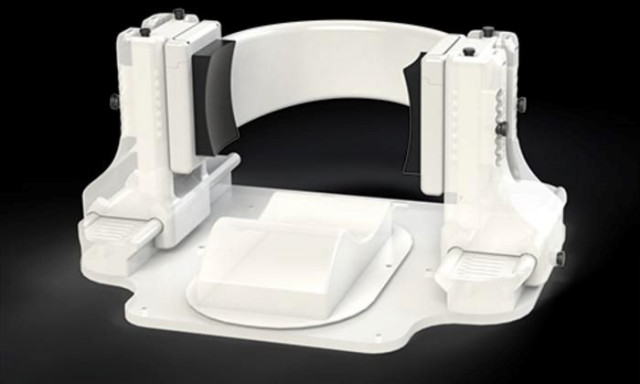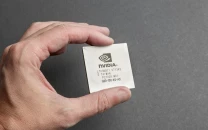New ultrasound device shows potential in treating chronic pain
The non-invasive technology stimulates the deep region in the brain to disrupt the pain signals

Pain is an essential biological signal, but various conditions can cause these signals to malfunction. For those suffering from chronic pain, the issue often lies in faulty signals deep within the brain, giving false alarms about wounds that have healed, amputated limbs, or other complex scenarios.
Patients enduring such life-altering pain are always seeking new treatments. A new device from the University of Utah might offer a long-awaited solution.
Researchers at the university's John and Marcia Price College of Engineering and Spencer Fox Eccles School of Medicine have published promising findings about an experimental therapy that has provided relief to many participants after just one treatment session. They are now recruiting participants for a final round of trials.
At the centre of this research is Diadem, a new biomedical device that uses ultrasound to noninvasively stimulate deep brain regions, potentially disrupting the faulty signals that cause chronic pain.
Findings from a recent clinical trial are published in the journal Pain. This study builds on two previous studies, published in Nature Communications Engineering and IEEE Transactions on Biomedical Engineering, which outlined the device's unique features and demonstrated its efficacy.
The study was led by Jan Kubanek, a professor in Price’s Department of Biomedical Engineering, and Thomas Riis, a postdoctoral researcher in his lab. They collaborated with Akiko Okifuji, professor of Anesthesiology in the School of Medicine, as well as Daniel Feldman, a graduate student in Biomedical Engineering and Psychiatry, and laboratory technician Adam Losser.
In the randomized, sham-controlled study, 20 participants with chronic pain underwent two 40-minute sessions with Diadem, receiving either real or sham ultrasound stimulation. Patients reported their pain levels a day and a week after their sessions. Remarkably, 60% of those in the experimental group who received the real treatment reported a significant reduction in symptoms at both points.
“We were not expecting such strong and immediate effects from only one treatment,” Riis said.
Kubanek added, “The rapid onset of the pain symptom improvements, as well as their sustained nature, are intriguing and open doors for applying these noninvasive treatments to the many patients who are resistant to current treatments.”
Diadem’s approach is based on neuromodulation, a therapeutic technique aimed at directly regulating the activity of specific brain circuits. Unlike other neuromodulation methods that rely on electric currents or magnetic fields, Diadem's ultrasound technology can selectively target the anterior cingulate cortex, a brain region linked to chronic pain.
Following an initial functional MRI scan to map the target region, the researchers adjusted Diadem’s ultrasound emitters to correct for wave deflection caused by the skull and other brain structures. This procedure was detailed in Nature Communications Engineering.
The team is now preparing for a Phase 3 clinical trial, the final step before seeking approval from the Food and Drug Administration to use Diadem as a treatment for the general public.
“If you or your relatives suffer from chronic pain that does not respond to treatments, please reach out to us; we need to recruit many participants so that these treatments can be approved for the general public,” Kubanek said. “With your help, we think chronic pain can be effectively silenced. And with new pain treatment options, we can tackle the opioid crisis, too.”



















COMMENTS
Comments are moderated and generally will be posted if they are on-topic and not abusive.
For more information, please see our Comments FAQ